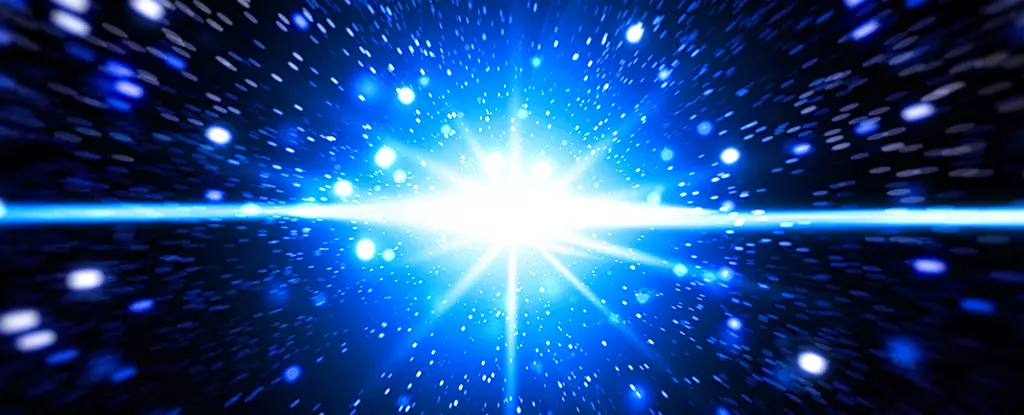Fast radio bursts (FRBs) have captivated the astronomical community since their discovery, offering tantalizing glimpses into the violent and enigmatic processes at play in our universe. These brief but powerful flashes of radio waves, lasting merely milliseconds, are thought to derive from diverse astrophysical phenomena. Central to their investigation is the magnetar, a highly magnetized neutron star, which is often considered the likely progenitor of FRBs. Yet, as research continues to unfold, these cosmic enigmas refuse to be compartmentalized into a single narrative, exposing the complexities of stellar evolution and the nature of the universe.
The prevailing notion is that most FRBs are extragalactic, originating from distant galaxies far beyond the Milky Way. A handful of exceptions have allowed scientists to trace some sources back to neutron stars within our own galaxy, revealing a connection between high-energy events and stellar remnants. What has further complicated our understanding is the observation that some FRBs exhibit repeating behavior, suggesting they cannot be merely the products of catastrophic events like supernovae. This realization has led to a deeper inquiry into the nature of these cosmic signals, particularly how and why they repeat.
A significant breakthrough came from the study of a specific repeating FRB, which was observed 21 times within just a few months. Notably, the ability to capture six distinct bursts from a secondary observatory positioned 60 kilometers away enabled a precise analysis of the event. This research revealed that the FRB originated from an edge region of a galaxy, challenging previous assumptions that such phenomena were predominantly sourced from the heart of galaxies where stellar formation is active.
One of the most striking discoveries about the FRB in question is its origins in a galaxy aged over 11 billion years, long past its active star-forming phase. This realization raises pivotal questions about the lifecycle of neutron stars and the circumstances under which they may continue to produce radio bursts. Traditional astrophysics posits that FRBs stem from relatively young magnetars; however, this case presents evidence that ancient stellar remains can also reconnect with the universe in remarkable ways.
Typically, a neutron star cools and enters a state of dormancy as it ages, making the sustained activity required to generate FRBs improbable. Yet the discovery of this old galaxy hosting an FRB calls into question the assumptions surrounding neutron star lifecycles. This begs the question: What mechanics allow an aged magnetar to emit such bursts?
One plausible hypothesis suggests that the FRB could be associated with a globular cluster situated near the galaxy’s edge. These clusters are renowned for their high stellar density and the frequent occurrence of stellar mergers, which may serve as a fertile ground for magnetars to form anew or interact dynamically. The swirling masses of stars could lead to unique scenarios in which young magnetars are born from mergers or old magnetars are reignited through interactions with their surroundings.
The idea that merging magnetars might produce FRBs during magnetic field realignments offers an exciting avenue for exploration. As such magnetic interactions release colossal amounts of energy, they could indeed produce the radio waves we observe as FRBs. This theory pushes the boundaries of our current understanding and suggests that the astrophysical processes generating FRBs are likely far more diverse than initially believed.
The study of fast radio bursts represents a frontier in modern astrophysics, encapsulating the thrill of discovery and the persistent mystery of the cosmos. While significant progress has been made in understanding the origins and behaviors of FRBs, each new finding underscores the complexity of cosmic events and urges a reevaluation of long-held theories. With continued observation and analysis, the enigmatic nature of FRBs may gradually unveil deeper insights into the lifecycle of stars, the intricacies of galactic evolution, and the ultimate fate of the universe itself. The journey of understanding continues, each FRB a beacon guiding us toward the intricate tapestry of cosmic phenomena waiting to be unraveled.


Leave a Reply